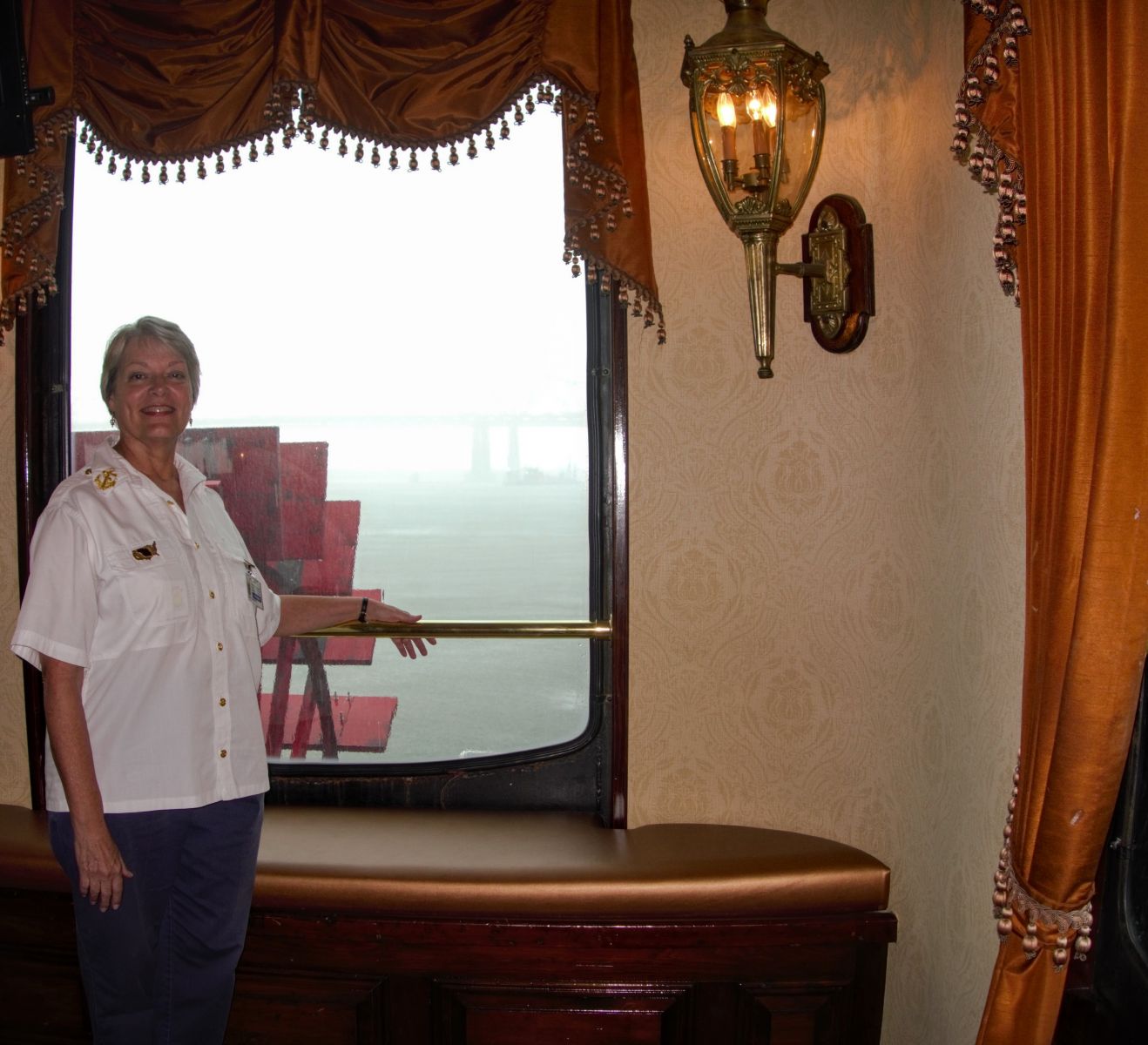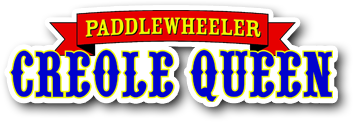Meet Creole Queen Historical Guide Christyn Elliott
Over the past few months, our Historical Cruise on the Creole Queen has gotten a revamp – most notably, the passionate historical experts who bring the tour to life for guests. Our guides steer the narrative, just as the captains steer the boat along the Mississippi River, navigating through New Orleans’ fascinating past leading up to the pivotal Battle of New Orleans until the boat reaches the Chalmette Battlefield where National Park Rangers take over. After a tour of the battlefield, the historical guide resumes with what happened after the historic battle while the boat sails back to harbor. In this series, we’ll introduce you to each of our unique historical guides. Kicking it off, we’d like you to meet Christyn Elliot.

Creole Queen: What is your history background?
Christyn: Retired social studies and talented theater teacher.
Describe your role as the historical guide:
As the tour starts downriver, I tell the guests where they are – pointing out areas of interest along the river throughout the French Quarter, and then the neighborhoods past the French Quarter - Faubourg Marigny and Bywater with Crescent Park. I go through the timeline of when Louisiana was originally claimed by the French, then the arrival of the LeMoyne brothers, then point out the Holy Cross neighborhood, then St. Bernard Parish and continue with the history about what happened after Louisiana was obtained by Americans.
Coming back upriver, I talk about the aftermath of the Battle of New Orleans. General Andrew Jackson bluffed his way out of a loss by reaching a treaty agreement with Britain’s General Lambert. We won on the East Bank and the British had men on the West Bank ready to attack, but Jackson convinced General Lambert to recall his troops. The British should have won – but the annihilation on the East Bank was so horrific that Lambert assumed that was it. It’s still taught that the Battle of New Orleans was insignificant because a treaty was signed but that actually meant nothing because it wasn’t ratified.
I also make sure to discuss the contributions of Free People of Color – the significance of what that group of people contributed. We’ve always been an intrinsically mixed city.
What’s your favorite story to tell on the Historical Cruise?
To let people know how important that battle was and what hallowed ground it is. We are taught that that battle was not important but it was all important. If we had not won and the British had won, we would have had to fight in Spain and Britain to be able to expand this country from coast to coast, because that is what would have been out of our control if we’d lost.
What’s your favorite part of the cruise?
My favorite part is when we enter St. Bernard Parish because that’s home – that’s where I’m from. Crossing the line at Jackson Barracks and being able to say we’re in St. Bernard Parish.
What’s your New Orleans background?
I’m a first-generation New Orleanian. Started off in Algiers and did all my growing up in St. Bernard Parish in Arabi. Went to Andrew Jackson High School and wanted to be a Little Colonel which was the girl guide group at the Chalmette Battlefield and monument and when it came time to take the test, I chickened out and I always regretted that. So this fulfills a high-school dream that I chickened out on. This is my second chance to finally do this and of course it’s on a much bigger field.
What do you love about New Orleans?
The people and the character. The history is amazing. The complexity of it – it’s an incredibly complex city and at the same time so simple. The crew on this boat is amazing – the most wonderful group of people I’ve worked with. Always helpful, always delightful. It really is like nowhere else.
Why do you think visitors should experience the Historical Cruise?
Because seeing the city from the river is entirely different from seeing it on the streets. It’s too busy, it’s too hustle and bustle – when you’re on the river, you immediately just chill out. It’s that calming effect of the river and having the leisure on the boat. Having this history floating by you and knowing where it came from. We’re at the bottom of the Mississippi River – so learning the history of it and all that’s happened on it. The magic of this river is like nothing else you’ll experience. It gives guests time to relax, absorb the atmosphere and feel the incredible beauty of this river. It’s an amazing place.











